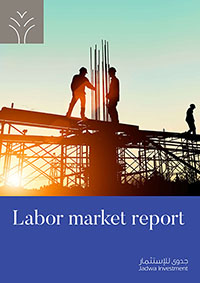Saudi Arabia’s labor market continues to demonstrate significant improvements, with unemployment rates hitting new lows, according to the latest report by Jadwa Investment. The Saudi Labor Market Update, based on data from the General Authority for Statistics (GaStat), highlights robust growth in employment and labor force participation during the first half of 2024 (H1 2024).
The unemployment rate fell to 7.1 percent at the end of H1 2024, down from 8.5 percent a year earlier. This improvement is largely attributed to a notable drop in female unemployment, which declined to 12.8 percent from almost 16 percent in Q2 2023. Male unemployment also saw a reduction, falling to 4 percent from 4.6 percent.
The number of Saudi workers in the private sector grew by 4.1 percent, increasing from 2.2 million in Q2 2023 to 2.3 million in Q2 2024. This marks a continued trend of Saudization in various industries.
Overall labor force participation rose from 50.4 percent at the end of 2023 to 50.8 percent at the end of H1 2024. This increase reflects higher engagement among both men and women.
The largest increases in Saudi employment were recorded in the ‘manufacturing’ and ‘construction’ sectors, showcasing the Kingdom’s focus on diversifying its economy and expanding non-oil industries.
The number of expatriates in the Saudi labor market surged to nearly 9 million in H1 2024, up from 8.1 million at the end of 2023. A significant portion of these workers joined the construction sector, accounting for around one-third of the new additions.
Employment in Saudi Arabia has expanded consistently, with 1.4 million new jobs added in 2022, 0.9 million in 2023, and 0.8 million in H1 2024 alone.
Jadwa Investment anticipates continued growth in job opportunities for Saudi nationals, driven by robust economic expansion and the Kingdom’s ongoing localization efforts. Sectors such as manufacturing, construction, and other non-oil industries are expected to lead this progress.
Saudi Arabia’s labor market reforms are part of its Vision 2030 initiative, which aims to diversify the economy away from oil dependence and increase Saudi participation in the workforce. Key measures include the Nitaqat program, which incentivizes private sector companies to hire more Saudis, and investments in education and training programs tailored to align with market demands.
The Kingdom’s non-oil economy has grown rapidly in recent years, bolstered by investments in infrastructure, technology, and green energy projects. These efforts have not only created new jobs but also enhanced the quality and diversity of employment opportunities for Saudi nationals.
As these reforms continue to take shape, Saudi Arabia’s labor market is expected to remain a key driver of its broader economic transformation.









